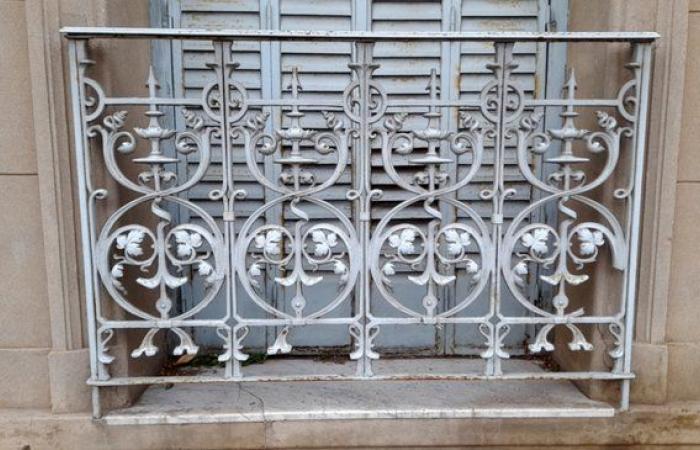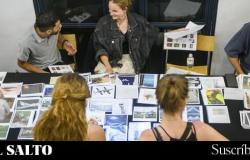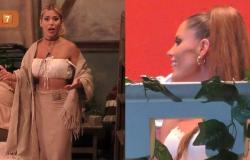He is a journalist, civil engineer and professor at the Universidad Nacional del Sud in subjects related to architectural heritage and urban planning. He has published articles in the magazines Propiedad, Todo es Historia, Obras & Protagonistas and Summa +. He participates in several radio micros referring to the history of Bahía Blanca. On two occasions he received first mention from ADEPA in the Culture and History category.
“He recognizes a long balustrade,/the rounds of an iron balcony,/a wall bristling with pieces/of glass. Nothing else. Everything has changed”. Jorge Luis Borges, “1929”
Don Bosco is a very particular street. On the one hand, because it seems “far from the center”, despite being just 15 blocks from Plaza Rivadavia. It is the width of an avenue, in fact it functions as such for much of its length, and is one of the main entrances to the city.
Added to this is its particularity of being a large shopping center, which is developed throughout its blocks, with a variety of proposals where services related to automobiles and motorcycles stand out.
I received the La Nueva Newsletters free of charge
{{msg}} {{msg}}It is the street that until 1948 was called Río Colorado. That year he changed his name in memory of Giovanni Melchiorre Bosco (1815-1888), a hardworking Catholic priest, creator of the Salesian order, popularly known as Don Bosco.
Walking it is a different challenge, where architecture has something to say. With their different styles, materials, prints and brands.
It is a street with unevenness, which is discovered by walking it at a different pace, with other eyes, with other times. Looking up, in detail, towards the interior.
two corners
Unoccupied after moving a few meters from the place, the pharmacy building that bears the name of the street has remained. With some art deco features in its finish, it maintains the iron structure that supported a canvas or awning and the frame of a non-existent poster.
The building retains its original access structure, through the curved octave, its openings partitioned with a sheet metal lintel and a glazed filia.
A few meters from the place, the headquarters of the El Danubio club, a neighborhood classic. The shield on its front indicates the white and green colors identify an institution founded on April 1, 1951 and that at the time of its creation the directors proposed to “make this small link in the neighborhood great, for the pleasant and cordial meeting of “Every sunset, which unites friends, forgets resentments and makes the moment of expansion joyful.” A space that is valued for its historical and cultural significance, a valuable neighborhood club.
Specific to the place
The chorizo house is never missing, a block leaning on one of the party walls, an entrance door that leads to a gallery that runs through all the doors of the lined rooms. Above the municipal line is the wall, which in this case is blind and does not allow you to peer into the front yard and the inevitable glass door.
As is the case on some streets in the city, there were homes prior to paving, which followed a reference in their location that later did not coincide with the level of the road. Don Bosco has that network of paths elevated with respect to the cordon, which forced the construction of steps to overcome the unevenness.
The construction details that are detected when walking express forms from other times. This is the case of the balconies with their worked iron bars and, below, a modest grille that ventilates the empty space under the pitch pine floors. On the windows the classic metal shutters with some of their moving parts, to spy on the street.
Gate and grille, construction details
The enamelled sheets, the ceramic ones, the steel ones and the lost name of Río Colorado that is hidden behind a manual update.
In a strange location, far from the corner, this century-old plaque appears indicating the name of the street “Pte Roca”. It is the street that Don Bosco crosses, about 40 meters from that place.
Homes with exposed brick that were never finished plastering make up a kind of missing link. Because the work of the bricks, on edge, those that protrude drawing projections, are prepared to receive the plaster and thus become decoration, an ornament. It is a sample of the previous work that has remained, in this case, uncompleted.
The street art present on this street, the corner mural. That transmits a message, or provides a color, that seeks to add something different to the urban landscape, the drawings on boarded up doors.
Venecitas, guards and fountains
Two typical materials from the 60s: venecita, small colored ceramics derived from the Venetian mosaic, a vitreous material coating made with raw materials that melt at high temperatures, incorporating color in this process.
Little yellow venetian, noble and resistant
On the other hand, the presence of the fulget, finished with small stones that allowed the drawing of guards. You have to look for them, because they are always there.
It’s not just about looking up when you walk around the city. Looking inward allows you to discover the patios that come to life, with plants and flowers, adding a fountain or a statue. A bank. The place that encourages rest and gathering, the anteroom of the house.
The sidewalk-commerce, a pagoda kiosk and the police in color
A frequently repeated situation on the street, in its context of a large number of businesses, is the use of sidewalks as an extension of businesses. A landscape that is common in all neighborhoods and that seeks to encourage buyers and thus improve sales in a time, like all times in reality, of lean times and little money.
The presence of a metal kiosk is surprising. So far from the center. It is part of the equipment placed at the beginning of the century and it is striking that it has been included in the neighborhoods.
Sheet metal kiosk in Rivadavia Square, 1928
They were called pagoda kiosks and in the 1940s some of them were replaced by the so-called “boat kiosks.” But many survived. Some have even been rescued in recent times. The one on Don Bosco Street is little less than a ruin. It wouldn’t be a bad idea to rescue it, value it, find a use or destination.
Around 1800, the Fifth Police Station is located, created at the end of the 1960s. A mansion with an air of the Italian Renaissance, with half-pinto arches and pilasters framing the openings. On the sidewalk there is a mast that, unlike most of these elements scattered around the city, has its flag placed.
El Maldonado, the long-awaited railway and the Venus Passage
The bridge over the Maldonado stream near Don Bosco was one of the first built over that watercourse. The work was inaugurated in 1932, as an integral part of the road to Cuatreros (today General Cerri).
Despite being built of concrete, it was affected by the flood that that watercourse had in 1933 – one of the most important of the 20th century – forcing important repairs. The current structure dates back to 1949, as part of the canalization of the stream that forced its adaptation.
As part of the “iron belt” that, like a corset, surrounds the urban plan, Don Bosco is crossed by the tracks of what was the Buenos Aires to the Pacific railway, originally called Bahía Blanca to the Northwest. This level crossing keeps destroyed testimonies of past times, when trains bound for La Pampa passed through the place, the first stations being those of Villa Bordeu and Villa Olga.
Northwest Station, Sixto Lapiur and Roca.
On its route to the town of Realicó it had six junctions that allowed it to add other destinations.
In the place remains what were the guard posts – vandalized, burned, forgotten -, the path before the crossing that required a change of step to pay attention to the possible passage of the train and some signs. Vestiges of an era and a transport system fatally lost.
Finally a large plot of land, which has been without a destination for decades. In its apparent vacant condition, this space has been proposed to be declared a UNESCO Cultural Heritage Site. It is at that site, in 1882, that the group of German scientists who chose Bahía Blanca installed their impressive astronomical station to record the transit of the planet Venus in front of the Sun, a phenomenon that would allow important calculations related to the distance of our planet to be carried out. to that star
German astronomical station, 1882
The transit of Venus before the Sun
As at the time of taking this illustrative photograph, the day of the celestial phenomenon was also cloudy and the measurements taken were able to record parts of that passage, when at times the Sun could be observed. Somewhere on that land, the Germans buried a lead box with documentation and elements used in their work, a testimony that is still waiting for someone to detect and recover it.
Final
“These streets (…)/are already my core./Not the eager streets,/uncomfortable with crowds and hustle and bustle,/but the listless streets of the neighborhood,/almost invisible because they are regulars,/moved by gloom and twilight” Jorge Luis Borges, The streets.
Don Bosco is a street that is thought to be fast, with a lot of traffic, with the air of an avenue. You have to walk along it to discover the other street, the one with the houses, the patios and the colors. It is the city that we do not look at, the blocks that, as Borges wrote, become “almost invisible because they are habitual.”






